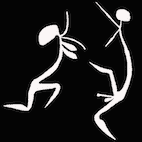Dick Murra Murra Kangaroo painting
Dick Murra Murra Kangaroo bark painting for sale
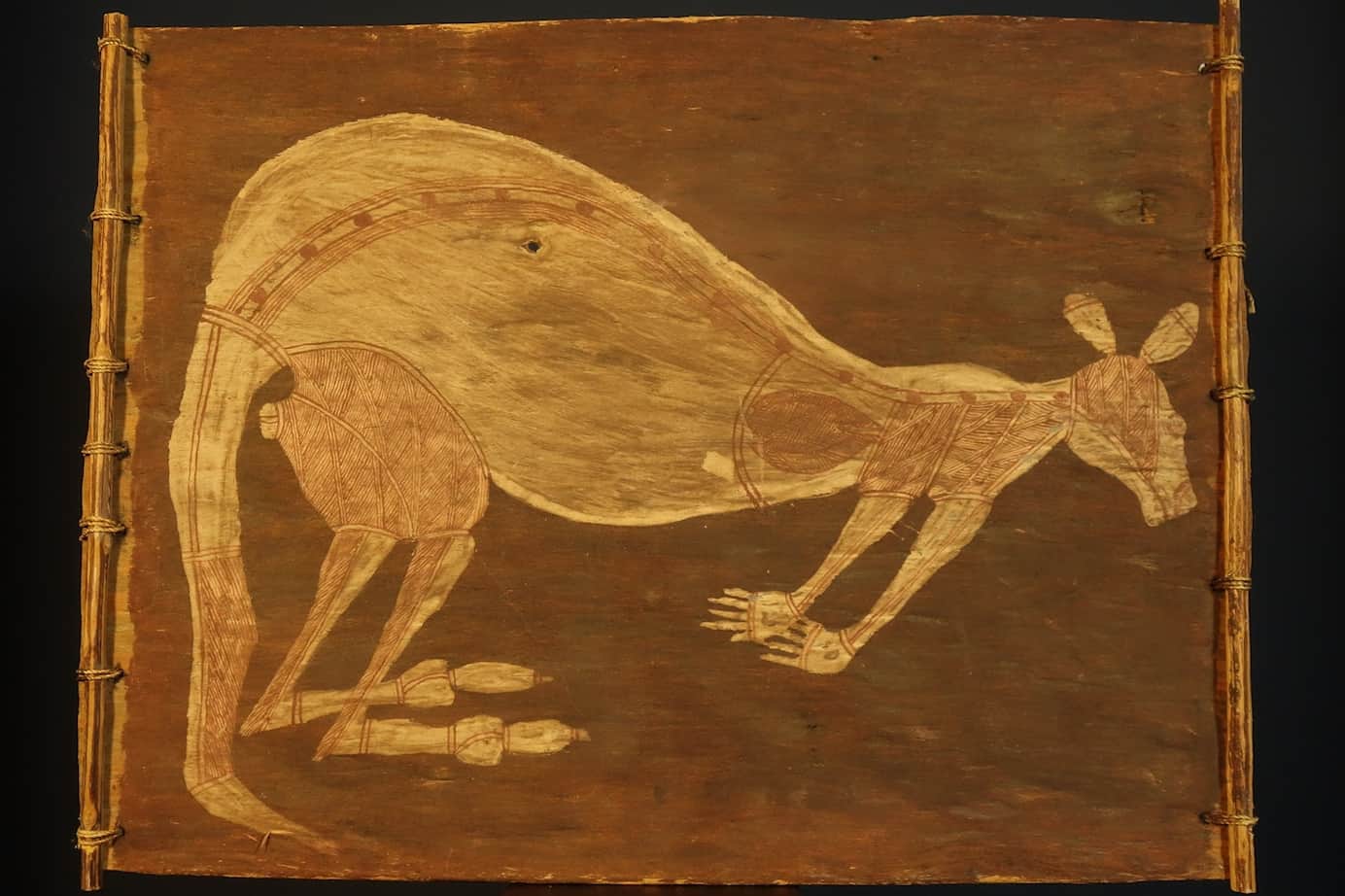
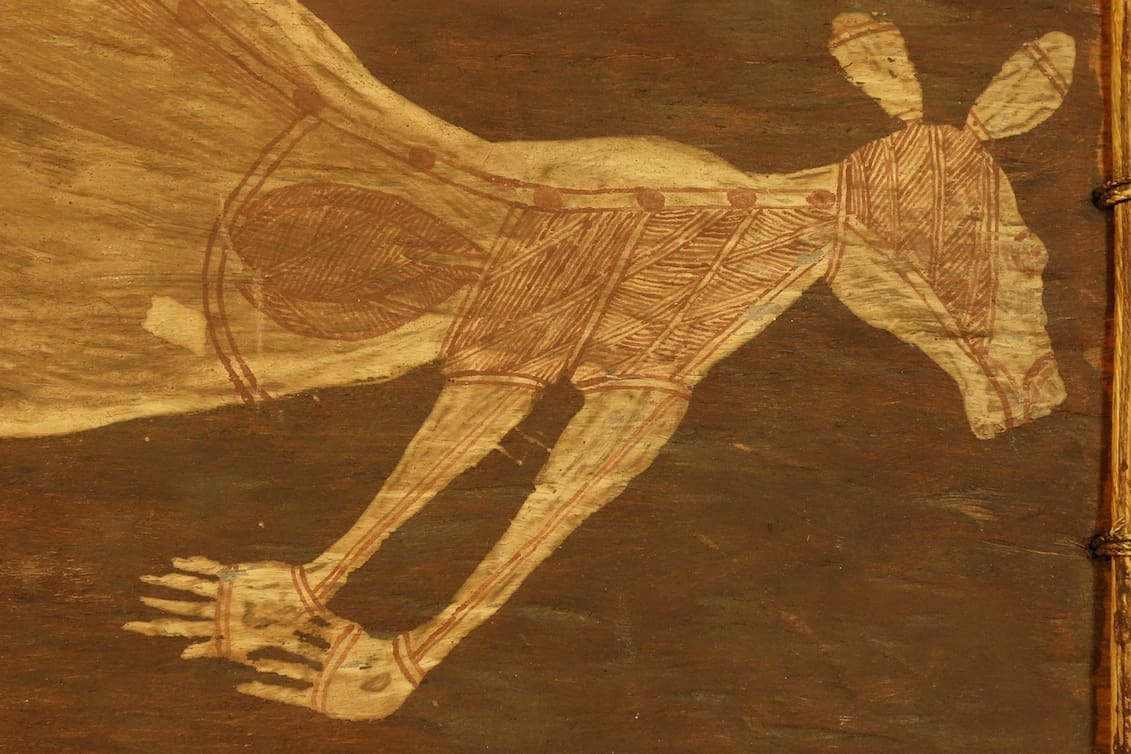
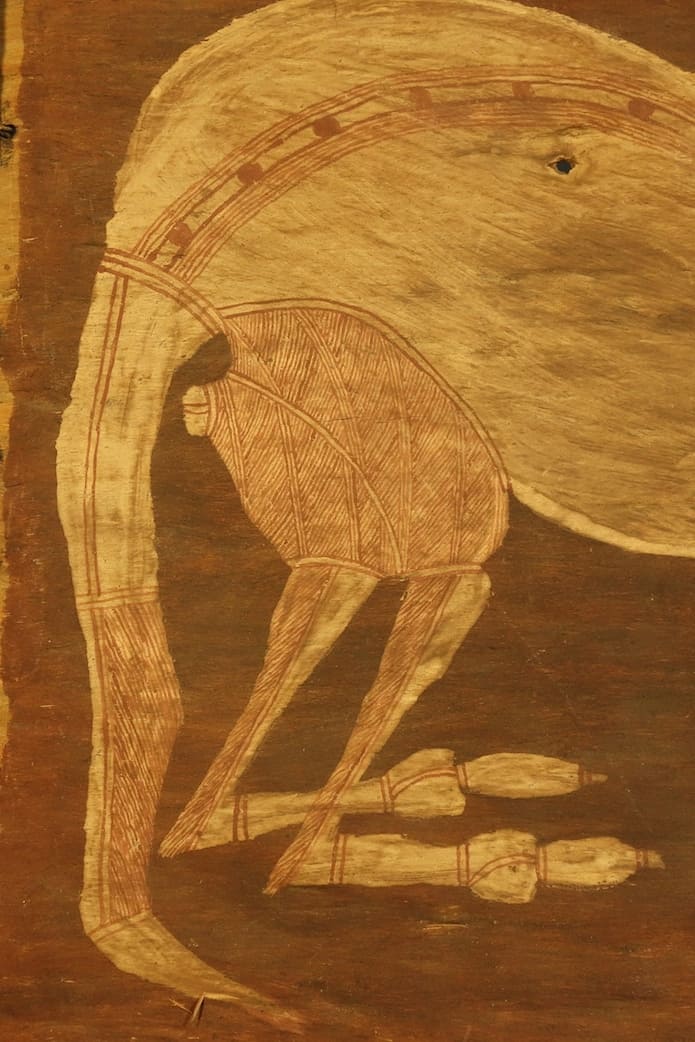
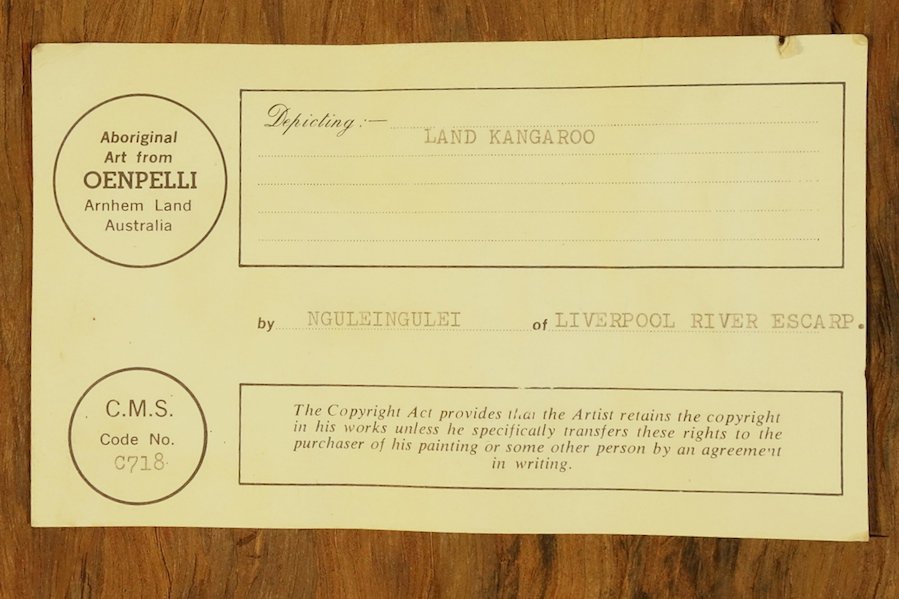
Object type: Bark Painting of Kangaroo
Locality: Oenpelli Bark Painting
Artist: Dick Murra Murra Ngueli Ngueili
Circa: 1972
Dimensions: 51cm X 41cm
Description:
This iconic Dick Murra murra Kangaroo bark painting is classic Oenpelli art, There is some minor pigment loss and a small natural hole in the bark but it is very flat and in good overall condition. I like it because as with depictions of kangaroos on cave walls, it is predominantly white with just some areas of parallel Rarrk.
Dick Nguelinguueli Murra Murra is considered by the National Museum of Australia to be one of the Old Masters. Two of his kangaroos were in the Old Masters Exhibition and Catalog
Price: SOLD
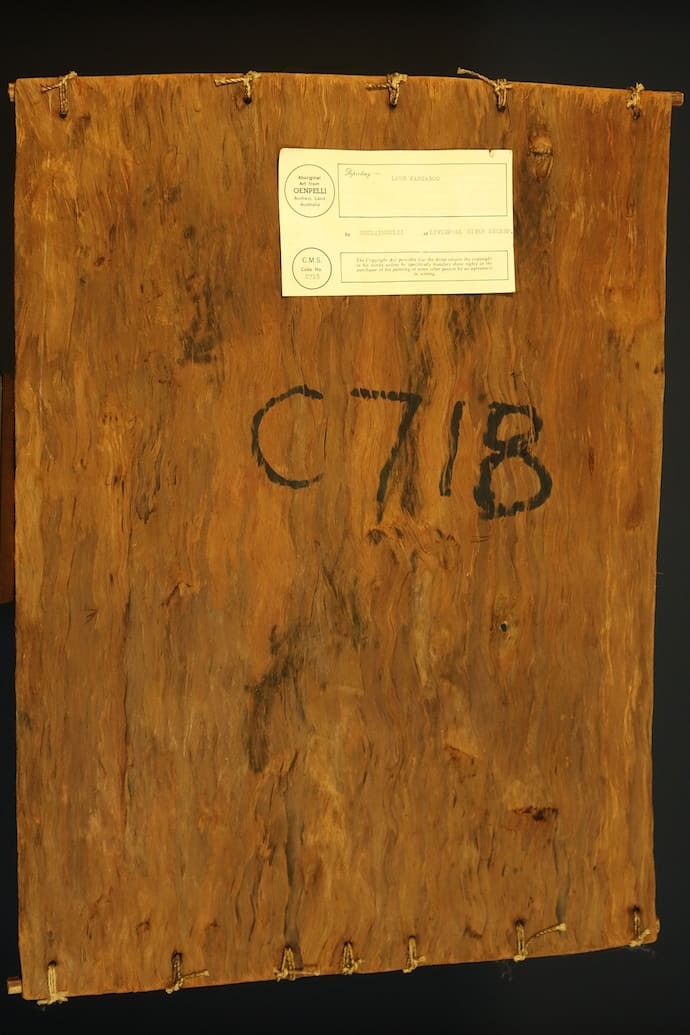
Dick Murra murra Kangaroo Bark Painting: A Western Arnhem Land Masterwork
This striking kangaroo bark painting by Dick Murra murra, a senior ceremonial leader and artist from Western Arnhem Land, exemplifies the powerful storytelling and visual authority of Aboriginal bark art. Created using natural ochres on stringybark, this piece captures the spirit of the kangaroo as a totemic figure, rendered with dynamic internal infill, x-ray detailing, and elegant geometric linework—hallmarks of Western Arnhem Land painting.
Who Was Dick Murra murra?
Also spelled Dick Murra Murra or Murrumurru, this artist remains one of the lesser-known but highly respected painters of the Stone Country region of Arnhem Land. Active in the mid-20th century, Murramurra painted primarily for mission-based collectors and anthropologists, producing works deeply rooted in ceremonial knowledge and ancestral law.
His bark paintings are often collected for their archaeological clarity, showing direct continuity with rock art traditions, particularly in the use of x-ray style kangaroos, barramundi, echidnas, and ancestral figures.
Today, Murramurra’s works are found in major collections such as the Berndt Museum of Anthropology, and in private holdings with strong provenance dating to the Church Missionary Society and Dorothy Bennett periods of collection.
About the Painting: Kangaroo as Ancestral Symbol
The kangaroo in Aboriginal art is far more than a native animal—it is often a Dreaming ancestor, associated with sacred places, hunting rituals, and clan identities. In this painting, Murramurra uses finely controlled rarrk (crosshatching) and anatomical precision to reveal both the spirit and physicality of the kangaroo.
Painted with natural ochres—white kaolin, red and yellow clay, and charcoal black—this bark painting displays the subdued but earthy palette characteristic of pre-1970s Arnhem Land works, prior to the adoption of commercial paint.
The artist’s bold linework reveals a deep ceremonial knowledge, as the kangaroo appears in motion, its internal organs shown in x-ray style, a method used to communicate both physical understanding and spiritual presence.
Bark Painting Value and Collectability
While not as widely known as his contemporaries Yirawala or Nayombolmi, Dick Murramurra’s bark paintings are increasingly sought after by collectors specialising in early Arnhem Land art. The value of a Dick Murramurra bark painting depends on condition, provenance, and subject matter.
This kangaroo painting, with its classic Western Arnhem Land aesthetic and clear execution, would appeal to collectors seeking:
-
Early bark paintings with strong anthropological and cultural depth
-
Works by artists connected to traditional law and ceremonial roles
-
Paintings that show continuity with rock art traditions of the Arnhem Plateau
Expect auction prices in the range of $1,500 to $6,000, depending on preservation and documentation. Works with missionary labels or field notes command a premium due to their historical importance.
Provenance and Historical Significance
Paintings like this one were often collected during field expeditions or as part of mission-era exchanges, when Aboriginal artists were encouraged to produce works for outside audiences. Murramurra’s generation helped to establish bark painting as a serious art form—bridging traditional ceremonial practice with contemporary expression.
This particular bark likely dates from the 1960s or early 1970s, a period of rich cultural output in Western Arnhem Land, particularly around Maningrida, Gunbalanya (Oenpelli), and Marrkolidjban.
Conclusion
This Dick Murramurra bark painting stands as a powerful example of Aboriginal visual storytelling. The kangaroo, rendered in x-ray precision, conveys both ancestral presence and artistic excellence. For collectors of Western Arnhem Land bark paintings, works like this offer a rare glimpse into a cultural continuum that stretches back tens of thousands of years.
Whether you are looking to value, collect, or learn more about bark paintings, this artwork is a valuable link in the chain of Arnhem Land artistic legacy.
